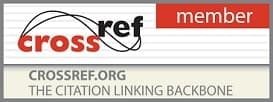2021, Vol. 5 Issue 1, Part B
The risk factors associated with complications in proximal femoral nailing
Author(s): Dr. Joseph Eugene, Dr. Hemanth R, Dr. Rajagopal HP, Dr. Ashok Kumar Reddy K and Dr. Preksha Vijay
Abstract: Cephalomedullary nails are able to provide necessary bending and torsional stability to combat the displacement of the fracture fragments. Proximal femoral nail being an intra medullary device is a load sharing device and has the inherent advantage of shorter lever arm, thereby decreasing the tensile strain on the implant. The patient is placed in supine position on fracture table with adduction and internal rotation of the affected limb by 10-20 degrees (under image intensifier) and closed reduction of the fracture was done by traction and internal rotation. The unaffected leg is fixed and abducted as far as possible or kept in wide abduction. The image intensifier was positioned so that the antero posterior and lateral views of the hip and femur could be taken. Open reduction is performed if closed reduction failed. There is no significant association between type of fracture and Harris Hip Score at 1st follow up. There is no significant association between Harris hip score and ASA at 3rd follow up at 6 month.
Pages: 66-68 | 689 Views 89 Downloads
How to cite this article:
Dr. Joseph Eugene, Dr. Hemanth R, Dr. Rajagopal HP, Dr. Ashok Kumar Reddy K, Dr. Preksha Vijay. The risk factors associated with complications in proximal femoral nailing. Nat J Clin Orthop 2021;5(1):66-68 DOI: https://doi.org/10.33545/orthor.2021.v5.i1b.259






